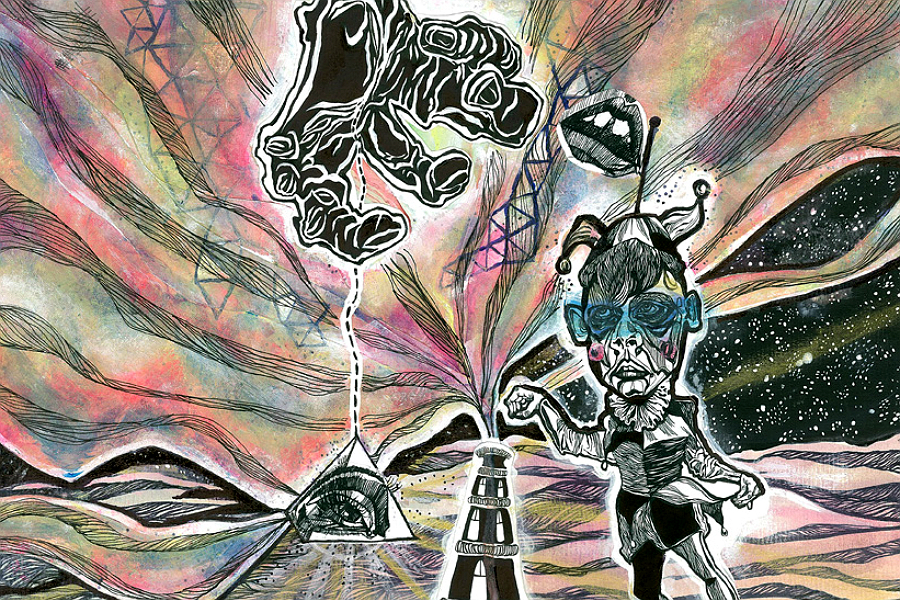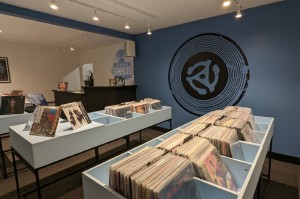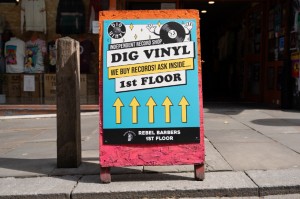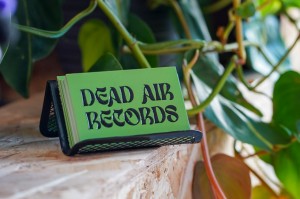Psychedelia: through the prism of contemporary art

With Liverpool Psych Fest on the horizon, Amy Jones looks at psychedelia’s journey into the world of cutting edge technology and contemporary art …
The Liverpool International Festival of Psychedelia has got us very excited. The brilliant line up includes the likes of The Time and Space Machine and Wolf People, to name but two, but the festival, as was officially announced at the end of last week, also features an array of psychedelic visuals courtesy of the never disappointing, Screenadelica.
The exhibition will showcase posters from artists such as Alan Forbes, Adam Pobiak, John Howard and others, demonstrating the rich visual tradition of psychedelic culture. The inclusion of the exhibition in the festival’s line-up has got us thinking about the connection between psychedelia and art, inspiring us to explore the visual aspect of this enduring cultural movement.
Throughout the history of psychedelia, which largely erupted in the 1960s, it has been clear that art has a pivotal role within the genre; hardly surprising when you consider that psychedelic culture originates from attempts to express the experience of hallucinogens on an audio/visual plain. Its prominent features are beautifully illustrated here by Liverpool-based artist Katie Craven, who captures the swirling organic forms, lurid colour pallets and other-worldly collage typical of all that is wonderfully psychedelic.
Musicians from Jimi Hendrix to Pink Floyd embraced these visuals too, with brilliantly bizarre trippy imagery adorning album covers and gig posters on several releases. The tradition continues today with psyche bands such as Tame Impala, Dungen and Liverpool favourites, Stealing Sheep decorating their album sleeves with colorful kaleidoscopic artwork for our consumption. The celebration of the visual at Liverpool Psych Fest began with its advertising (their latest poster depicts what looks like an astronaut monkey having an awesomely weird party on the moon with some unexpected characters), and will culminate in the Screenadelica exhibition.
However, with so many sub-genre’s of psychedelic music out there, from rock to jazz and out into space, we thought it was time to explore how its visual culture has diversified throughout the years, and whether it has embraced contemporary culture and technology in the same way that so many of the pedal-loving psychedelic musicians have. So, in the interests of journalism you understand, we’ve delved into the weird and wonderful world of contemporary psychedelic art.
One of the forerunners in the contemporary field, propelled to stardom through his exciting collaborations with Animal Collective, is Danny Perez. His videos frequently show weird happenings with sinister undertones, against swirling psychedelic backdrops and the kind of visual chaos that might ensue if you got trapped inside a lava lamp. His latest offering for Hot Chip’s new single Look at where we are shows Perez’ trippy visuals fused with the kind of luxe feeling we’ve come to expect from big budget music videos. The results are spectacular.
If his music video credentials aren’t enough to convince you of his contemporary art prowess, there’s his ‘visual album’ ODDSAC, with Animal Collective and an immersive installation, Transverse Temporal Gyrus (exhibited at New York’s Guggenheim in 2010), illuminating the white curves of the Museum Rotunda - almost enough to persuade us to jump on a plane to New York just to go and experience it.
As Perez demonstrates, video has been adopted as an effective medium for capturing the kinds of swirling movement frequently associated with psychedelia. Artist Andrew Benson, AKA Pixlpa, is known for his ‘remixing’ of visuals (also known as Data Moshing); corrupting them into a strangely beautiful mix of merging colours and glitchy disjointed pixels. Videos like Radical Eyes sum up Pixlpa’s ability to take you down the rabbit hole and out again with only moderate motion sickness along the way. Check out his vimeo page for more.
Pixpla’s videos represent an exciting shift into the use of cutting edge technology in this sphere. His work, where shapes and images collide, overwhelms you with movement and colour, precisely demonstrating new technology’s ability to provide us with new sensory experiences.
Technology has also rehabilitated the development of sound art, and VAVABOND is an emerging experimental sound artist whose work has been described by The Creators Project as “making psychedelic sounds from out of space”, capturing the idea that their sound pieces have the ability to transport you from the here and now to somewhere completely out of this world. VAVABOND works with Max software, allowing her to take pedestrian sounds such as the batting of an insect’s wing, or the breaking of the waves on the shore and fuse, repeat and pervert them, turning them into mind-melting versions of their former selves.
VAVABOND has also paired with China’s premier sound artist Li Hian Jong on a joint venture called Vagus Nerve, you can have a listen to their collaboration here to take you even further out to space.
It seems to us that psychedelia has long departed from its dependancy on hallucinogens to experience the world in an alternate light. The idea that we can only perceive things differently with the aid of these substances seems to have been dismissed by new forms of technology, allowing us to delve into new, previously unexplored avenues of experience. The idea of psychedelia being a quest for new forms of perception arguably originates with Aldous Huxley. In his seminal 1954 text Through the Doors of Perception, Huxley documents his own mescaline trip and presents its ability to allow him to experience the world without the limits placed upon our mind by subconsciously adopted social constructs.
Famously quoting William Blake who wrote: “If the doors of perception were cleansed everything would appear to man as it is, infinite,” Huxley suggests that, instead of providing us with escapism, psychedelic culture is about exploring the limits of the mind and opening it up to experiences and interpretations of the world around us. Perhaps it’s this intriguing concept which has lead to psychedelia’s journey into the world of cutting edge technology and contemporary art.
The marrying of psychedelia with contemporary artists who have a thirst for new ways of expressing and experiencing the world, seems to take the best bits of psychedelia from its hallucinogenic years. The adoption of new technology propels it forward into a future of – in the tradition of all things psychedelic – taking the familiar and transforming it into an unknown, new experience.
Perhaps the reason the psychotropic, slightly out of focus flame at the heart of psychedelia never burns out, is because what the movement represents, as demonstrated by all of the artists above, is a constant quest for the new; new forms of representation, expression and ultimately experience, which seems to be facilitated best by embracing new technology.
Yes, it originates from trying to represent the mind-altering, reality side-stepping state of hallucinogenic drugs but, it has found its way into popular culture and endured for decades through the shared quest for new ways of experiencing and processing an ever increasingly complicated world. Psychedelic culture, as with the music, will be around for a while yet.
Amy Jones
Liverpool Psych Fest, 2pm ’til late, Saturday 29 September, Camp and Furnace
Illustration courtesy Katie Craven





